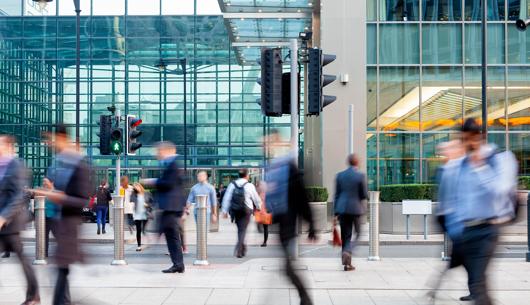In response to the ongoing housing issues and the necessity for more sustainable development, the new Labour government has introduced a number of targeted changes concerning the green belt in its revision of the National Planning Policy Framework (NPPF).
It features a series of proposals that aim to balance the need between building new homes and commercial spaces, while also maintaining the integrity and purpose of a green belt. This article gives a detailed overview of the proposed changes.
Prioritising brownfield development
The revised NPPF continues to underscore the importance of prioritising brownfield sites for development. These sites, having already been previously developed, are regarded as the first step in addressing the housing needs without encroaching untouched land.
The government proposes a system of “brownfield passports”, in which local planning authorities will be encouraged to approve brownfield development. However, it has acknowledged that brownfield sites alone will not suffice the demands for housing.
New definition of grey belt land
To bridge the gap between the housing needs and restrictions on availability of land suitable for development, the government proposes the concept of a grey belt. This would involve the strategic release of certain low-performing green belt parcels of land, which provide a limited contribution to the green belt’s core purposes.
This approach is designed to be strategic and safeguarded, ensuring that every development would align with sustainable development principles.
The NPPF will specifically define what grey belt land would include. For now, the proposed definition would include:
- Previously-developed land (PDL) within the green belt.
- Green belt parcels that contribute minimally to its five primary purposes, excluding environmentally valuable lands or those of significant importance, such as national parks and sites of special scientific interest (SSSI).
The government is seeking feedback on whether additional exclusions or specific criteria are necessary to further refine the definition.
Development criteria and safeguards: The ‘golden rules’
To ensure that major development on land released from the green belt benefits both communities and nature, several criteria and safeguards will be put in place, known as the ‘golden rules’. These include:
- A mandatory provision for 50% affordable housing in any new development
- Infrastructure upgrades to support new housing
- Development must include benefits like biodiversity net gain and improved access to high-quality green spaces.
Local planning authorities are also expected to conduct a sequential test in which PDL within the green belt will be prioritised before considering any other type of grey belt. Higher performance green belt sites would only be considered if they can be made sustainable.
The aim of this approach is for the lower quality green belt to be identified first, while also not restricting development of specific opportunities which could be made more sustainable.
It is recognised that not every previously-developed or grey belt land would be the best or most sustainable location for development. Therefore, it is the right of the local planning authority to decide the required support for the development in order to meet sustainability objectives.
Balancing environmental and development needs
The government states that it remains committed to the preservation of the overall extend and purpose of the green belt. It is emphasised that the development should not fundamentally undermine the function of the green belt.
Instead, any release of grey belt land should in turn lead to positive environmental improvements and an enhanced public access to green spaces.
Short-term measures and long-term planning
In the short term, the changes proposed in the in NPPF will allow for the release of grey belt lands outside the traditional planning process to support the delivery of housing needs.
The government proposes a new paragraph within the updated NPPF to make it clear that where in instances that a local authority can’t demonstrate a five-year housing land supply, is delivering less than 75% against the housing delivery test, or when there is an unmet commercial or other need, then development on the green belt would not be considered inappropriate.
This would be true when it is developed on sustainable grey belt land that meets the golden rules requirements for major development and where development would not undermine the fundamental function of the green belt.
Could the grey belt unlock housebuilding growth?
Ultimately, the proposed changes aim to deliver tangible benefits to communities and the environment while tackling the ongoing housing crisis.
This would be done by setting a strict criterion for grey belt land release to ensure developments include accessible green spaces.
There would also be additional requirements which would include an objective for the new residents to have access to high-quality green spaces within a short walk of their homes, further proving the government’s push towards creating high-quality, sustainable living spaces that address the current and future housing needs.
Despite this, looking at the proposed changes to the NPPF, it is difficult not to conclude that the impact on some local planning authorities is going to be much greater than others. Those authorities whose areas consist primarily of green belt are not going to be able to argue for lower housing targets. They also not going to go to meet their housing targets on non-green belt land, and so will be forced to release large swathes of green belt.
While there are protections in place – such as if the release fundamentally undermines the function of the green belt across the area of plan – this is likely to be interpreted narrowly because any other interpretation would undermine the purpose of the changes.
Accordingly, while the proposals to allow building on grey belt may not be overly controversial, the wider green belt changes are likely to be much more divisive.
Key contact

Ilias Lul Dirie
Trainee Solicitor
ilias.luldirie@brownejacobson.com
+44 (0)330 045 1085









































